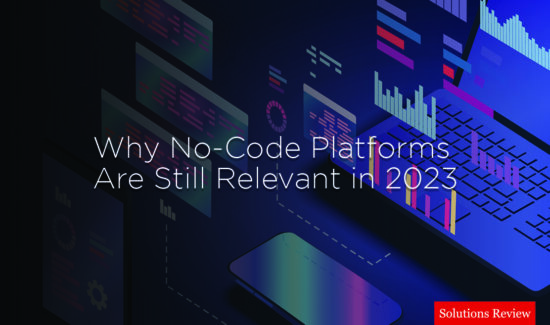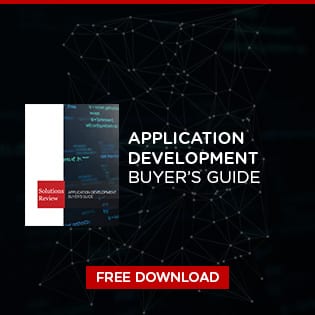Can RMAD Help Non-Developers Create Better Apps Than Developers?

Rapid Mobile Application Development (RMAD) is taking off in a big way with most of the top mobile application platforms offering some kind of RMAD platform. The need for enterprise mobile apps is far beyond the amount of developers there are to build them which leaves enterprises with too few apps, outdated apps and apps that are much too general to be useful to any employee’s specific duties.
While speaking with Jason Wong who covers MADP at Gartner, there were quite a few important enterprise MAD questions I had concerning the low-code aspect of these RMAD platforms and what kind of person is now available create these apps that developers just don’t have time for? How do developers feel about these apps developed by non-developers using RMADs?
Gartner predicts that enterprises could have more than 1,000 apps available in private corporate app stores. The apps each employee downloads will be very specific to their job and may even be unique to each user. For example, HR will need an entirely different set of apps compared to IT, who in turn will need a whole different set of apps than sales. In larger enterprises, this selection can easily grow to the numbers Gartner predicts, but what doesn’t grow at the same rate are the developers who build these apps.
What usually happens with enterprise apps is, you either hire a developer who works in house, who builds and maintains these apps, or you outsource to an app developer who will build the app for you. Both of these options are viable, but it all comes down to what you can afford and what makes sense in the long term? If your developing a small number of apps, hiring a developer may be in your best interest, but if you’re an enterprise that’s looking to fully embrace what enterprise apps can offer, you have to have an app development platform and you have to have at least one developer.
But it again comes back to what you can afford; how many developers can you hire? Can your IT team realistically help the developer with an app? The last thing you want to do is stretch your IT team so thin to the point where enterprise apps are being deployed before they’re ready and are not getting the maintenance they need to remain secure and functional.
This is where RMAD truly shows it’s value: Low-code and no-code platforms allow people who are not developers to produce secure, highly functional apps. IT can develop these apps despite not knowing mobile and even other employees with working knowledge of programs can build these apps using RMAD.
For example, here at Solutions Review, I’m an Editor; I spend my day researching and writing about the latest mobile news and have an above average understanding of mobile app development for someone who isn’t actually a developer. I have a background in IT as well an elementary knowledge of coding, so the idea would be that I could design an enterprise app for the Editors at Solutions Review using RMAD.
So how do developers feel about this? You could argue that RMAD renders less useful now that less experienced users can develop these critical apps, but according to Wong, there’s plenty more for them to do:
“From our conversations at Gartner with our IT clients, they’re actually relieved. We tell them about these RMAD tools and the other big trend is also the back end integration work that that needs to get done; just because you have these front end tools, doesn’t mean that you don’t need to pay attention to your back end integration to make sure that the APIs are appropriately sized and performance for the mobile endpoint. A lot of companies still have legacy systems and are even still working on their ESP, enterprise services license technology to bring all those things together.
“Now [with] mobile, we’re on to newer architecture in the back end. IT cares about the back end and that’s what they feel comfortable with implementing and ensuring that there’s governance and standards and security. That’s all good on the back end and they want to focus on that.The front end for app development really drives them nuts; they can’t keep up with it.
“They would rather focus on all that back end stuff they’re familiar with then and start picking and choosing RMADs that make sense for their business partners to leverage to build the apps that they need. IT can start concentrating on the core of back end stats, making sure that it’s reliable, open and its governance and security apply to it so when these frontend tools are using those services, there are guardrails for them to build the applications using these RMAD tools. We’ve been predicting that by 2020, 70 percent of mobile app development will be without the involvement of IT.”
This is a huge step for the future of app development. If we look back at my previous example of building an app for my own job, an Editor at Solutions Review, it makes sense for me to build that app because I’m the one who knows what needs to be included in it to ensure productivity. The choices that I make for functionality and usability are coming from my experience and what I want in an app. However, I know nothing about the back end of app development and while RMADs give us great front ends, there has to be a developer there who can handle back end.
Can non-developers create better enterprise apps than developers? The answer is maybe. We’ll see how enterprises choose to embrace RMADs in the coming years and how IT, developers and other workers can collaborate on developing the best possible apps while utilizing resources.
- 5 Questions to Ask When Hiring a Mobile App Developer - August 22, 2017
- The Top 10 User Experience Blogs You Need to Follow in 2017 - July 17, 2017
- Solutions Review Presents: The User Interface Hall of Shame - July 13, 2017






















